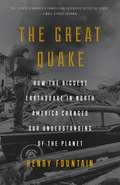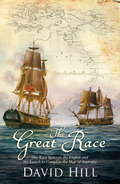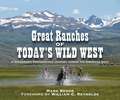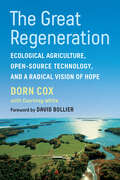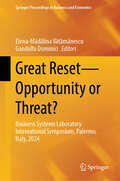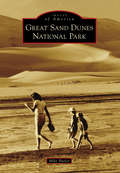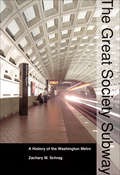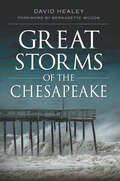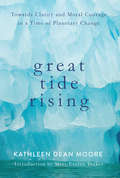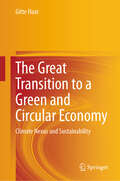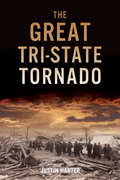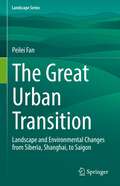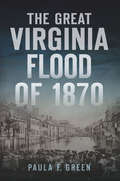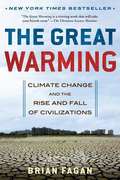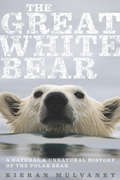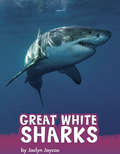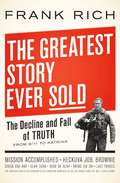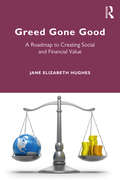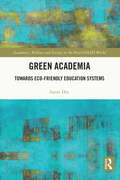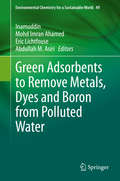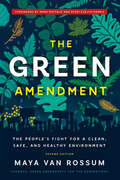- Table View
- List View
The Great Quake: How the Biggest Earthquake in North America Changed Our Understanding of the Planet
by Henry FountainIn the bestselling tradition of Erik Larson’s Isaac’s Storm, The Great Quake is a riveting narrative about the biggest earthquake in North American recorded history -- the 1964 Alaska earthquake that demolished the city of Valdez and swept away the island village of Chenega -- and the geologist who hunted for clues to explain how and why it took place. At 5:36 p.m. on March 27, 1964, a magnitude 9.2. earthquake – the second most powerful in world history – struck the young state of Alaska. The violent shaking, followed by massive tsunamis, devastated the southern half of the state and killed more than 130 people. A day later, George Plafker, a geologist with the U.S. Geological Survey, arrived to investigate. His fascinating scientific detective work in the months that followed helped confirm the then-controversial theory of plate tectonics.In a compelling tale about the almost unimaginable brute force of nature, New York Times science journalist Henry Fountain combines history and science to bring the quake and its aftermath to life in vivid detail. With deep, on-the-ground reporting from Alaska, often in the company of George Plafker, Fountain shows how the earthquake left its mark on the land and its people -- and on science.
The Great Race: The Race Between the English and the French to Complete the Map of Australia
by David HillOn the afternoon of 8 April 1802, in the remote southern ocean, two explorers had a remarkable chance encounter. Englishman Matthew Flinders and Frenchman Nicolas Baudin had been sent by their governments on the same quest: to explore the uncharted coast of the great south land and find out whether the west and east coasts, four thousand kilometres apart, were part of the same island. And so began the race to compile the definitive map of Australia. These men's journeys were the culmination of two hundred years of exploration of the region by the Dutch - most famously Abel Tasman - the Portuguese, the Spanish and by Englishmen such as the colourful pirate William Dampier and, of course, James Cook. The three-year voyages of Baudin and Flinders would see them endure terrible hardships in the spirit of discovery. They suffered scurvy and heat exhaustion, and Flinders was shipwrecked and imprisoned - always knowing he was competing with the French to produce the first map of this mysterious continent. Written from diaries and other first-hand accounts, this is the thrilling story of men whose drawings recorded countless previously unknown species and turned mythical creatures into real ones, and whose skill and determination enabled Terra Australis Incognita to become Australia.
The Great Race: The Race Between the English and the French to Complete the Map of Australia
by David HillOn the afternoon of 8 April 1802, in the remote southern ocean, two explorers had a remarkable chance encounter. Englishman Matthew Flinders and Frenchman Nicolas Baudin had been sent by their governments on the same quest: to explore the uncharted coast of the great south land and find out whether the west and east coasts, four thousand kilometres apart, were part of the same island. And so began the race to compile the definitive map of Australia. These men's journeys were the culmination of two hundred years of exploration of the region by the Dutch - most famously Abel Tasman - the Portuguese, the Spanish and by Englishmen such as the colourful pirate William Dampier and, of course, James Cook. The three-year voyages of Baudin and Flinders would see them endure terrible hardships in the spirit of discovery. They suffered scurvy and heat exhaustion, and Flinders was shipwrecked and imprisoned - always knowing he was competing with the French to produce the first map of this mysterious continent. Written from diaries and other first-hand accounts, this is the thrilling story of men whose drawings recorded countless previously unknown species and turned mythical creatures into real ones, and whose skill and determination enabled Terra Australis Incognita to become Australia.
Great Ranches of Today's Wild West: A Horseman's Photographic Journey Across the American West
by Mark Bedor William C. ReynoldsIn this beautiful collection, veteran travel writer Mark Bedor takes readers on a journey through twenty of the great ranches of today's Wild West. With over 200 stunning full-color photographs, reading Great Ranches of Today's Wild West is almost as good as being there. Take a horseback ride through the snowy woods at Vista Verde Ranch in Steamboat Springs, Colorado, or follow in the footsteps of Butch Cassidy on the Outlaw Trail at Utah's Tavaputs Ranch-it's all just another part of the American ranch experience.
The Great Regeneration: Ecological Agriculture, Open-Source Technology, and a Radical Vision of Hope
by null Dorn CoxIn the age of climate change, food scarcity, and increasing industrialization, can a few visionary farmers find global solutions through technology and create networked, open-source regenerative agriculture at a truly transformative scale?In The Great Regeneration, farmer-technologist Dorn Cox and author-activist Courtney White explore unique, groundbreaking research aimed at reclaiming the space where science and agriculture meet as a shared human endeavor. By employing the same tools used to visualize and identify the global instability in our climate and our communities—such as satellite imagery—they identify ways to accelerate regenerative solutions beyond the individual farm.The Great Regeneration also explores the critical function that open-source tech can have in promoting healthy agroecological systems, through data-sharing and networking. If these systems are brought together, there is potential to revolutionize how we manage food production around the world, decentralizing and deindustrializing the structures and governance that have long dominated the agricultural landscape, and embrace the principles of regenerative agriculture with democratized, open-source technology, disseminating high-quality information, not just to farmers and ranchers, but to all of us as we take on the role of ecosystem stewards.In this important book, the authors present a simple choice: we can allow ourselves to be dominated by new technology, or we can harness its potential and use it to understand and improve our shared environment. The solutions we need now, they write, involve a broader public narrative about our relationship to science, to each other, and to our institutions. And we all need to understand that the choices made today will affect the generations to come. The Great Regeneration shows how, together, we can create positive and lasting change.
Great Reset—Opportunity or Threat?: Business Systems Laboratory International Symposium, Palermo, Italy, 2024 (Springer Proceedings in Business and Economics)
by Elena-Mădălina Vătămănescu Gandolfo DominiciThis book gathers revised papers presented at the 2024 International Symposium of the Business Systems Laboratory, held in Palermo, Italy on January 11–12, 2024. In the last four years, the world has seen dramatic changes in virtually every aspect of global society. We have seen a rapid transformation of social systems and, since the outbreak of COVID-19 in 2020, an unprecedented acceleration of the socioeconomic upheavals already in place - disruptive socioeconomic changes that have since been dubbed “The Great Reset" by the World Economic Forum. The book applies scientific rigor to discuss and debate these disruptive transformations and identify new ways to address the global economic and social challenges of our time from a systemic perspective. It sheds light on the various interactions between natural, social, and economic systems in these turbulent times by pursuing a multidisciplinary but integrative approach that encompasses e.g. management, information science, psychology, economics, engineering, and political science. Accordingly, the book will be of interest to readers from these fields, from both an academic and managerial standpoint.
Great Sand Dunes National Park
by Mike ButlerSouthern Colorado's unique Great Sand Dunes rise to a height of 750 feet above the San Luis Valley floor and are the nation's highest dunes not adjacent to an ocean or lake. The sweeping dunes were protected as a national monument in 1932 and as a national park in 2000. From prehistoric hunter-gatherers to the historic Ute Indian tribe, inhabitants have long used the resources of the land around the dunes. Zebulon Pike was the first American explorer to witness the dunes in 1807, followed by a long procession of other explorers, ranchers, and miners. Today, visitors from around the world come to climb up and slide down the dunes in Great Sand Dunes National Park and Preserve.
The Great Society Subway: A History of the Washington Metro (Creating the North American Landscape)
by Zachary M. SchragAs Metro stretches to Tysons Corner and beyond, this paperback edition features a new preface from the author.Drivers in the nation's capital face a host of hazards: high-speed traffic circles, presidential motorcades, jaywalking tourists, and bewildering signs that send unsuspecting motorists from the Lincoln Memorial into suburban Virginia in less than two minutes. And parking? Don't bet on it unless you're in the fast lane of the Capital Beltway during rush hour.Little wonder, then, that so many residents and visitors rely on the Washington Metro, the 106-mile rapid transit system that serves the District of Columbia and its inner suburbs. In the first comprehensive history of the Metro, Zachary M. Schrag tells the story of the Great Society Subway from its earliest rumblings to the present day, from Arlington to College Park, Eisenhower to Marion Barry. Unlike the pre–World War II rail systems of New York, Chicago, and Philadelphia, the Metro was built at a time when most American families already owned cars, and when most American cities had dedicated themselves to freeways, not subways. Why did the nation's capital take a different path? What were the consequences of that decision?Using extensive archival research as well as oral history, Schrag argues that the Metro can be understood only in the political context from which it was born: the Great Society liberalism of the Kennedy, Johnson, and Nixon administrations. The Metro emerged from a period when Americans believed in public investments suited to the grandeur and dignity of the world's richest nation. The Metro was built not merely to move commuters, but in the words of Lyndon Johnson, to create "a place where the city of man serves not only the needs of the body and the demands of commerce but the desire for beauty and the hunger for community."Schrag scrutinizes the project from its earliest days, including general planning, routes, station architecture, funding decisions, land-use impacts, and the behavior of Metro riders. The story of the Great Society Subway sheds light on the development of metropolitan Washington, postwar urban policy, and the promises and limits of rail transit in American cities.
Great Storms of the Chesapeake (Disaster Ser.)
by David HealeyDiscover the hurricanes, blizzards, and historic floods that have shaped the history of the Chesapeake Bay. Even before John Smith's crew weathered its first squall, the Chesapeake Bay and its tributaries had been ravaged by every type of storm imaginable. A 1769 hurricane altered the course of history, demolishing the shipping channels of Charlestown and making Baltimore the dominant port. A once-in-five-hundred-years storm, Tropical Storm Agnes, left more than seventy people dead and devastated the ecology of the bay. Before the blizzards of 2009 and 2010, the snowfall record was held by the combination of the Great Eastern Blizzard of 1899, which blew the water out of the bay, and the Great White Hurricane, which stranded the oyster fleet of Baltimore in feet of ice. Join author David Healey as he keeps an eye to the red horizon and chronicles the most remarkable storms to churn the waters of the Chesapeake Bay. Includes photos and illustrations
Great Tide Rising: Towards Clarity and Moral Courage in a Time of Planetary Change
by Kathleen Dean MooreEven as seas rise against the shores, another great tide is beginning to rise - a tide of outrage against the pillage of the planet, a tide of commitment to justice and human rights, a swelling affirmation of moral responsibility to the future and to Earth's fullness of life.Philosopher and nature essayist Kathleen Dean Moore takes on the essential questions: Why is it wrong to wreck the world? What is our obligation to the future? What is the transformative power of moral resolve? How can clear thinking stand against the lies and illogic that batter the chances for positive change? What are useful answers to the recurring questions of a storm-threatened time - What can anyone do? Is there any hope? And always this: What stories and ideas will lift people who deeply care, inspiring them to move forward with clarity and moral courage?
The Great Transition: Shifting from Fossil Fuels to Solar and Wind Energy
by Emily Adams Janet Larsen Lester R. Brown J Matthew RoneyThe great energy transition from fossil fuels to renewable sources of energy is under way. As oil insecurity deepens, the extraction risks of fossil fuels rise, and concerns about climate instability cast a shadow over the future of coal, a new world energy economy is emerging. The old economy, fueled by oil, natural gas, and coal is being replaced with one powered by wind, solar, and geothermal energy. The Great Transition details the accelerating pace of this global energy revolution. As many countries become less enamored with coal and nuclear power, they are embracing an array of clean, renewable energies. Whereas solar energy projects were once small-scale, largely designed for residential use, energy investors are now building utility-scale solar projects. Strides are being made: some of the huge wind farm complexes under construction in China will each produce as much electricity as several nuclear power plants, and an electrified transport system supplemented by the use of bicycles could reshape the way we think about mobility.
The Great Transition
by Campbell BruceIn the fourteenth century the Old World witnessed a series of profound and abrupt changes in the trajectory of long-established historical trends. Transcontinental networks of exchange fractured and an era of economic contraction and demographic decline dawned from which Latin Christendom would not begin to emerge until its voyages of discovery at the end of the fifteenth century. In a major new study of this 'Great Transition', Bruce Campbell assesses the contributions of commercial recession, war, climate change, and eruption of the Black Death to a far-reaching reversal of fortunes from which no part of Eurasia was spared. The book synthesises a wealth of new historical, palaeo-ecological and biological evidence, including estimates of national income, reconstructions of past climates, and genetic analysis of DNA extracted from the teeth of plague victims, to provide a fresh account of the creation, collapse and realignment of Western Europe's late medieval commercial economy.
The Great Transition to a Green and Circular Economy: Climate Nexus and Sustainability
by Gitte HaarThe green transition is the way to a sustainable and fair planet, and necessary to secure supply chains, deliver predictable prices, and ensure access to raw materials despite resource scarcity through sustainable production and consumption.This book provides broad, essential insights into the main elements of the green transition, circular economy, and sustainability. Sustainability and the green transition will mean new market conditions for businesses. Companies will be subject to new legislation at the corporate and product level alike. They will need to meet new requirements, e.g., having to provide a tremendous amount of new non-financial ESG data to deliver transparency and traceability in the value chains of products and businesses. The book aims to close the gaps between science, society, and business. To do so, it describes the complexity of sustainability and the need for a holistic approach. In addition, it provides solutions, tools and methods to transform today’s linear economy, make businesses ready for the future, and create a society that no longer pushes the planet beyond its limits.
The Great Tri-State Tornado (Disaster)
by Justin HarterThe Deadliest Twister in U.S. History The weather forecast for much of the Midwest on March 18, 1925, predicted "Wind and rain." This prediction was right, but lethally inadequate. Around 1 p.m., a tornado touched down near Ellington, Missouri, and charged relentlessly for three and a half hours across Missouri, Illinois, and Indiana. The destructive storm left schools and workplaces leveled, over 600 dead and 1,600 injured in its two-hundred-nineteen-mile wake--earning it the name, the Great American Tornado. A nation united, doctors and nurses rushed aboard express trains. The Red Cross orchestrated an enduring six-month relief campaign, and people contributed funds and condolences from around the world. Amidst the staggering ruin, volunteers, the Red Cross, and ordinary heroes like Isaac Levy spearheaded awe-inspiring recovery efforts that rivaled the powerful storm.
The Great Urban Transition: Landscape and Environmental Changes from Siberia, Shanghai, to Saigon (Landscape Series #34)
by Peilei FanThis monograph examines the (sub)urbanization process of seven transitional economies in Southeast, East, and North Asia (SENA), i.e., Siberia of Russia in North Asia, China and Mongolia in East Asia, and Cambodia, Lao PDR, Myanmar, and Vietnam in Southeast Asia. In ten chapters, great urban transformation occurred in SENA is discussed, as well as the transitional period which aggravated urban environments in SENA cities and how ‘institutional shift,’ enabled by movements of urban residents and transitional urban governance, may facilitate the process and improve the urban environmental condition. This book includes land cover and land use data derived from satellite images over the past thirty years and intensive field research in more than thirty cities exploring the rise of these great cities and their environmental challenges. Unlike in western countries, the current urbanization process in Asian transitional economies is a hybrid product of market logic and state legacy and intervention, with these influences sometimes conflicting and at other times enhancing each other, under intensified globalization. This book is of interest to researchers and students interested in landscape, urban studies, environment studies in particularly Asia, as well as planners and policy makers.
The Great Virginia Flood of 1870 (Disaster)
by Paula F. GreenIn the fall of 1870, a massive flood engulfed parts of Virginia, West Virginia and Maryland. What began near Charlottesville as welcome rain at the end of a drought-plagued summer quickly turned into a downpour as it moved west and then north through the Shenandoah Valley. The James, Shenandoah and Potomac Rivers rose, and flooding washed out fields, farms and entire towns. The impact was immense in terms of destruction, casualties and depth of water. The only warning that Richmond, downriver from the worst of the storm, had of the wall of water bearing down on it was a telegram. In this account, public historian Paula Green details not only the flood but also the process of recovery in an era before modern relief programs.
The Great Warming: Climate Change and the Rise and Fall of Civilizations
by Brian M. FaganA breakout bestseller on how the earth's previous global warming phase reshaped human societies from the Arctic to the Sahara--a wide-ranging history with sobering lessons for our own time. From the tenth to the fifteenth century the earth experienced a rise in surface temperature that changed climate worldwide--a preview of today's global warming. In some areas, including western Europe, longer summers brought bountiful harvests and population growth that led to cultural flowering. In the Arctic, Inuit and Norse sailors made cultural connections across thousands of miles as they traded precious iron goods. Polynesian sailors, riding new wind patterns, were able to settle the remotest islands on earth. But in many parts of the world, the warm centuries brought drought and famine. Elaborate societies in western and central America collapsed, and the vast building complexes of Chaco Canyon and the Mayan Yucatán were left empty. The history of the Great Warming of a half millennium ago suggests that we may yet be underestimating the power of climate change to disrupt our lives today--and our vulnerability to drought, writes Fagan, is the "silent elephant in the room. "
The Great White Bear: A Natural and Unnatural History of the Polar Bear
by Kieran MulvaneyPolar bears are creatures of paradox: They are white bears whose skin is black; massive predators who can walk almost silently; Arctic residents whose major problem is not staying warm, but keeping cool. Fully grown they can measure 10 feet and weigh close to 2,000 pounds, but at birth they are just 20 ounces. Creatures that may wander thousands of miles over the course of a year, they begin life in a snowdrift. Human encounters with these legendary beasts are cause for both excitement and apprehension. Tales throughout history describe the ferocity of polar bear attacks on humans; but human hunting of polar bears has exacted a far larger toll, obliging Arctic nations to try to protect their region's iconic species before it's too late. Now, however, another threat to the polar bears' survival has emerged, one that is steadily removing sea ice and the life it supports. Without this habitat, polar bears cannot exist. The Great White Bear celebrates the story of this unique species. Through a blend of history, both natural and human, through myth and reality and observations both personal and scientific, Kieran Mulvaney masterfully provides a context for readers to consider the polar bear, its history, its life, and its uncertain fate.
The Great White Shark Scientist (Scientists in the Field Series)
by Sy Montgomery Keith Ellenbogen<P>Dr. Greg Skomal, biologist and head of the Massachusetts Shark Research Program, is investigating a controversial possibility: Might Cape Cod's waters serve as a breeding ground for the great white shark, the largest and most feared predatory fish on Earth? <P>Sy Montgomery and Keith Ellenbogen report on this thrilling turning point in marine research and travel to Guadeloupe, Mexico, to get up close and personal with the sharks. This daring expedition into the realm of great whites shows readers that in order to save the planet and its creatures, we must embrace our humanity and face our greatest fears. <P><b>Winner of the 2018 Riverby Award</b>
Great White Sharks (Animals)
by Jaclyn JaycoxGreat white sharks are the largest predatory sharks in the sea! They live all over the world, have many sharp teeth, and can smell blood from miles away. Dive deep into the ocean, and find all the facts about these incredible sharks.
The Greatest Story Ever Sold: The Decline and Fall of Truth From 9/11 to Katrina
by Frank RichA step-by-step account of how skillfully the White House has built its house of cards, to consolidate its power at any cost.
Greed Gone Good: A Roadmap to Creating Social and Financial Value
by Jane Elizabeth HughesGreed Gone Good: A Roadmap to Creating Social and Financial Value brings the how-tos of impact finance to a broad- based audience of investors, from the individual to the institutional. Written in an engaging, jargon-free style and loaded with practical advice, it explores the pitfalls and potential of the burgeoning impact revolution—the increasingly widespread belief that business and financial leaders should weigh social value as well as financial value in all of their decisions, to create both a better business model and a better world. Cheerleaders have written a number of books advocating the magic of impact finance. Greed Gone Good hopes for the magic too, but also believes that an uncritical eye does not effectively advance the cause. We now have 10 years of impact investing history to examine, and not all of it is laudable. We could hold hands and sing Kumbaya in praise of impact finance; or we could employ constructive criticism to figure out what’s gone well and what hasn’t, and how we should move forward more productively. Greed Gone Good focuses on the roadmap—how to reorient and repackage finance and investing in order to deliver on this promise. In particular, it focuses on how to realize the potential of the impact revolution to become a silver bullet against future failures. Green Gone Good will have widespread appeal to investors ranging from individuals and family offices to the world’s largest asset managers and investors.
Green Academia: Towards Eco-Friendly Education Systems (Academics, Politics and Society in the Post-Covid World)
by Sayan DeyThis book studies the importance of adopting Green Academia as a systemic long-term counter-intervention strategy against any form of impending pandemics in the post-COVID era and beyond. It argues that anti-nature and capitalistic knowledge systems have contributed to the evolution and growth of COVID-19 across the globe and emphasizes the merits of reinstating nature-based and environment-friendly pedagogical and curricular infrastructures in mainstream educational institutions. The volume also explores possible ways of weaving ecology and the environment as a habitual practice of teaching and learning in an intersectional manner with Science and Technology Studies. With detailed case studies of the green schools in Bhutan and similar practices in India, Kenya, and New Zealand, the book argues for different forms of eco-friendly education systems and the possibilities of expanding these local practices to a global stage. Part of the Academics, Politics and Society in the Post-COVID World series, this book will be an essential read for scholars and researchers of sociology, cultural studies, decolonial studies, education, ecology, public policy social anthropology, sustainable development, sociology of education, and political sociology.
Green Adsorbents to Remove Metals, Dyes and Boron from Polluted Water (Environmental Chemistry for a Sustainable World #49)
by Inamuddin Mohd Imran Ahamed Eric Lichtfouse Abdullah M. AsiriThis book reviews adsorption techniques to clean wastewater, with focus on pollution by dyes and heavy metals. Advanced adsorbents include carbon nanomaterials, biomass, cellulose, polymers, clay, composites and chelating materials.
The Green Amendment: The People's Fight for a Clean, Safe, and Healthy Environment
by Maya K. van RossumA veteran environmentalist shares her roadmap to a healthier world—one that uses the law to empower activists and provide hope for communities everywhere.We have reached a critical tipping point in our fight for the environment: Corporations profit off climate change, natural disasters devastate homes, and the most vulnerable suffer the health effects of pollution. Yet our laws are designed to accommodate this destruction rather than prevent it. Without government support, it's no wonder people feel powerless.But there is a solution. In The Green Amendment, veteran environmentalist Maya K. van Rossum presents her radically simple plan for a green future: bypass local laws and turn to the ultimate authority—our state and federal constitutions—to ensure we have the right to a healthy environment.Through compelling interviews with activists on the ground, clear evidence from experts, and heartbreaking stories from those hit hardest by environmental ruin, The Green Amendment lights the path forward. In this updated edition of her trailblazing 2017 book, van Rossum invites readers to join the movement by sharing:Why Green Amendments work where other movements have failedHow to position Green Amendments and what specific language offers the strongest legal protectionsHow to argue in favor of environmental rights, and the economic and health benefits that will help activists make the caseHow Green Amendments address the crucial intersection of environmentalism and anti-racismWhat everyone—from artists and students to scientists and lawyer—can do to further the causeWith the power of The Green Amendment, we can claim our environmental rights, ensuring a clean, safe Earth for generations to come.
